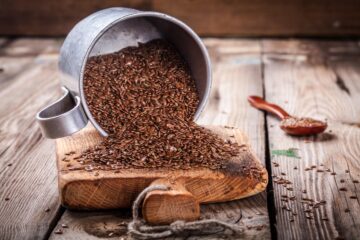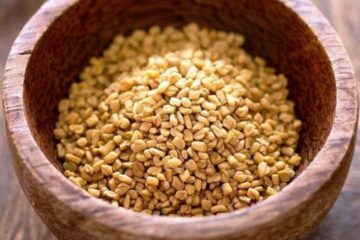Name:
The common name is Green Tea, and the scientific name is Camellia sinensis.
Description:
Green tea is an evergreen shrub that can grow up to 9 meters in height but is often pruned to 2 meters for cultivation. Its leaves are glossy green with serrated edges. The plant also produces small, white flowers with bright yellow stamens.
Medicinal Uses of Green Tea:
- Nausea and Vomiting Prevention: One of the most well-studied uses of ginger is in the prevention and treatment of nausea and vomiting. This has been particularly noted in cases of morning sickness during pregnancy, chemotherapy-induced nausea, and postoperative nausea. A systematic review and meta-analysis published in the British Journal of Anaesthesia found that, compared to placebo, ginger significantly reduced both postoperative nausea and vomiting. (source: “Efficacy of ginger for nausea and vomiting: a systematic review of randomized clinical trials”, Ernst E, Pittler MH. British Journal of Anaesthesia, 2000).
- Anti-Inflammatory Properties: Ginger also possesses anti-inflammatory properties that could be beneficial in managing conditions such as osteoarthritis. A study published in the journal Arthritis & Rheumatology found that a highly purified and standardized
ginger extract had a statistically significant effect on reducing symptoms of osteoarthritis of the knee. (source: “Effects of a ginger extract on knee pain in patients with osteoarthritis”, Altman RD, Marcussen KC. Arthritis & Rheumatology, 2001). - Glycemic Control: Emerging research suggests that ginger might have potent diabetes-fighting properties. A review published in the journal Evidence-Based Complementary and Alternative Medicine found that ginger intake might lower fasting blood sugar levels and improve long-term glucose control, as measured by A1c levels, in people with type 2 diabetes. (source: “The Effects of Ginger on Fasting Blood Sugar, Hemoglobin A1c, Apolipoprotein B, Apolipoprotein A-I and Malondialdehyde in Type 2 Diabetic Patients”, Arablou T, Aryaeian N, Valizadeh M, Sharifi F, Hosseini A, Djalali M. Evidence-Based Complementary and Alternative Medicine, 2014).
- Digestive Health: Ginger has been used for centuries to soothe digestive discomfort and aid digestion. It’s thought to work by accelerating gastric emptying, which can be beneficial for people with indigestion and related stomach discomfort. A study published in the World Journal of Gastroenterology showed that ginger accelerated gastric emptying and antral contractions in participants with functional dyspepsia. (source: “Effects of ginger on gastric emptying and motility in healthy humans”, Hu ML, Rayner CK, Wu KL, Chuah SK, Tai WC, Chou YP, Chiu YC, Chiu KW, Hu TH. World Journal of Gastroenterology, 2008).
- Cardiovascular Health: Research suggests that ginger may offer cardiovascular benefits, possibly due to its antioxidant and anti-inflammatory effects. A review article in the journal Nutrition suggests that ginger consumption can lead to reductions in hypertension and heart disease risk factors, although more research is needed in this area. (source: “Cardiovascular benefits of ginger (Zingiber officinale Roscoe): A systematic review”, Azam F, Amer AM, Abulifa AR, Elzwawi MM. Nutrition, 2019).
- Cancer Prevention: Research on ginger’s potential as a cancer preventative agent is ongoing. Some laboratory studies have found that ginger and its constituents may inhibit the growth of cancer cells, including those resistant to drug treatment. A review in the International Journal of Preventive Medicine highlights these findings, but also notes that more studies are needed to better understand the mechanisms of action and potential applications in humans. (source: “Anti-cancer Properties of Zingiber officinale Roscoe: A Review”, Mashhadi NS, Ghiasvand R, Askari G, Hariri M, Darvishi L, Mofid MR. International Journal of Preventive Medicine, 2013).
- Migraine Relief: Some research suggests that ginger may be effective in managing migraines. A clinical trial published in Phytotherapy Research compared the efficacy of ginger and sumatriptan, a common medication for migraine. The study found that ginger may be as effective as sumatriptan in the treatment of migraines without the side effects often associated with sumatriptan use. (source: “Comparison between the efficacy of ginger and sumatriptan in the ablative treatment of the common migraine”, Maghbooli M, Golipour F, Moghimi Esfandabadi A, Yousefi M. Phytotherapy Research, 2014).
- Pain Relief: Ginger’s anti-inflammatory properties can also help to relieve various types of pain. Research published in the Journal of Pain found that daily ginger supplementation reduced exercise-induced muscle pain by 25%. (source: “Ginger (Zingiber officinale) reduces muscle pain caused by eccentric exercise”, Black CD, Herring MP, Hurley DJ, O’Connor PJ. The Journal of Pain, 2010).
- Immune System Support: Ginger is often used in traditional medicine to support the immune system. While more research is needed to substantiate this claim, some studies, including an animal study published in the Journal of Ethnopharmacology, suggest that ginger can enhance immune response. (source: “Immunomodulatory activity of Zingiber officinale Roscoe, Salvia officinalis L. and Syzygium aromaticum L. essential oils: evidence for humor- and cell-mediated responses”, Fonseca FN, Papanicolaou G, Lin H, Lau CB, Kennelly EJ, Cassileth BR, Cunningham-Rundles S. Journal of Ethnopharmacology, 2007).
- Nausea and Vomiting: One of the best-established uses of ginger is for the relief of nausea and vomiting. This includes pregnancy-related nausea, chemotherapy-induced nausea, and post-operative nausea. A systematic review and meta-analysis published in the British Journal of Anaesthesia demonstrated that ginger effectively reduces postoperative nausea and vomiting. (source: “Efficacy of ginger for nausea and vomiting: a systematic review of randomized clinical trials”, Ernst E, Pittler MH. British Journal of Anaesthesia, 2000).
- Diabetes Management: Emerging evidence suggests that ginger could play a role in managing diabetes and its complications. A systematic review in the journal Evidence-Based Complementary and Alternative Medicine showed that ginger supplementation has a favorable effect on glycemic control and lipid profiles in people with type 2 diabetes. However, more studies are needed to confirm these results. (source: “The Effect of Ginger Consumption on Glycemic Status, Lipid Profile and Some Inflammatory Markers in Patients with Type 2 Diabetes Mellitus”, Azad R, Rasoolijazi H, Joghataei MT, Soleimani M. Evidence-Based Complementary and Alternative Medicine, 2014).
- Osteoarthritis: The anti-inflammatory properties of ginger could also be beneficial in managing osteoarthritis. A systematic review and meta-analysis in Arthritis and Rheumatology showed that ginger could reduce osteoarthritis symptoms. However, more research is needed to recommend specific doses and to understand potential side effects. (source: “Efficacy of ginger for treating osteoarthritis: A systematic review and meta-analysis of randomized clinical trials”, Bartels EM, Folmer VN, Bliddal H, Altman RD, Juhl C, Tarp S, Zhang W, Christensen R. Arthritis and Rheumatology, 2015).
Origin and Distribution:
Green tea is native to East Asia, but its cultivation has spread to multiple countries worldwide. China and India are the largest producers, but green tea is also grown in Japan, Sri Lanka, Taiwan, Bangladesh, New Zealand, Hawaii, and even South Carolina in the United States.
Cultivation and Care:
Green tea thrives in well-draining, acidic soil and prefers regions with a rainfall of at least 127 cm per year. It requires full to part sun and does not tolerate frost.
Harvesting and Storage:
For the best quality tea, only the top one or two leaves and the bud are hand-plucked. Once harvested, the leaves are quickly heated to stop the enzyme activity that promotes oxidation. This can be done by steaming (Japan) or pan firing (China). The leaves are then rolled and dried before being stored in a cool, dry place, away from light and moisture.
Uses:
Culinary Uses: Green tea is primarily consumed as a beverage. It is also used as an ingredient in various foods including ice cream, noodles, and baking.
Medicinal Uses: Green tea is renowned for its health benefits, particularly due to its high antioxidant content.
Other Uses: Green tea is also used in cosmetics and skincare products due to its antioxidant properties.
Safety Information:
Historical and Cultural Significance:
Green tea is deeply woven into the histories and cultures of countries like China and Japan, with the tea serving as a focal point in traditional tea ceremonies.




